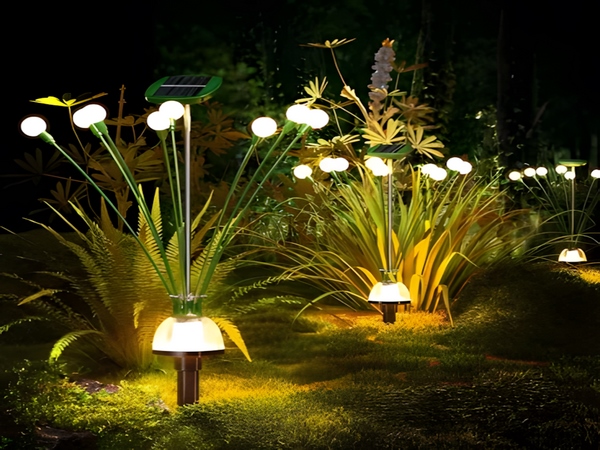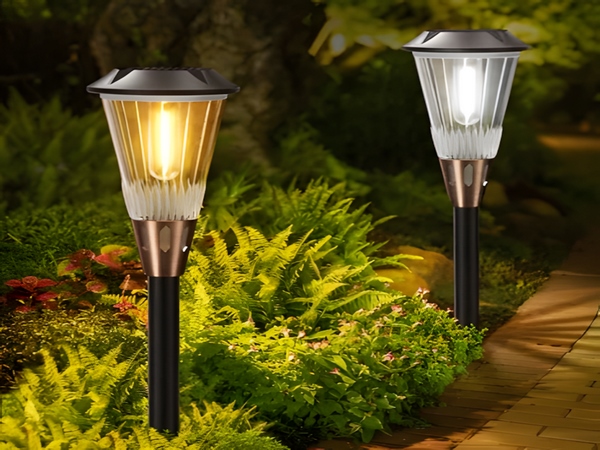
The rapid advancement of technology in today’s world has led to significant environmental challenges, with visible signs of pollution everywhere. The importance of energy-saving and eco-friendly solutions has brought solar energy to the forefront. Solar energy has become a new, sustainable energy source, replacing many traditional appliances, including conventional lawn lights, which are now increasingly being replaced by solar lawn lights. Products that benefit everyone quickly gain popularity, and solar lawn lights are one such solar product.
Solar lawn lights are now widely used in parks, scenic areas, and gardens, serving to beautify grass areas, conserve resources, and provide convenience. Let’s take a look at the advantages and components of lawn lights.
Solar lawn lights primarily operate using the energy from solar cells. During the day, sunlight strikes the solar cells, converting light energy into electrical energy, which is stored in batteries. At night, the batteries provide power for the lawn lights. Their advantages include safety, energy efficiency, convenience, and environmental friendliness, making them ideal for enhancing residential greenery and beautifying park lawns.
A circuit board IC paired with a rechargeable 5-cell battery can power 1–7 LED light-emitting diodes. Multiple circuit board ICs can follow this model. The integrated circuit and several components in the solar lawn light controller perform essential functions like charging circuits, driving circuits, light-sensitive control circuits, and pulse width modulation circuits. This controller features a high conversion efficiency of 80-85% (typical value), significantly reducing the power requirements of solar panels; it also has adjustable output current capabilities.

LED Solar Lawn Lights
consist of the following components:
The solar lawn light boost IC automatically switches between charging and discharging. When the solar charging panel detects sunlight during the day, it automatically turns off the light and enters charging mode. As night falls and the solar panel no longer detects sunlight, it switches to discharge mode, turning on the light. The solar lawn light boost IC can elevate the output voltage from a 1.5-volt rechargeable battery to 3.6 volts.

The structure of LED solar lawn lights includes the solar cell module, super bright LED light source, maintenance-free rechargeable batteries, automatic control circuits, and lighting fixtures.
Currently, most
lawn lights
use LED as the light source. LEDs have a long lifespan, exceeding 100,000 hours, and operate at low voltage, making them highly suitable for solar lawn lights. Notable advancements in LED technology have led to significant improvements in performance and cost-effectiveness over the past five years. Additionally, LEDs powered by low-voltage direct current allow for low light control costs, making it feasible to adjust brightness and frequently switch them on and off without adversely affecting performance.
Given the unique advantages of solar lawn lights, the design methods for their light source and power systems have seen rapid development in recent years. These lights have low power requirements, primarily serve decorative purposes, necessitate high mobility, and do not require complex wiring, all of which showcase the numerous advantages of solar-powered lawn lights.



